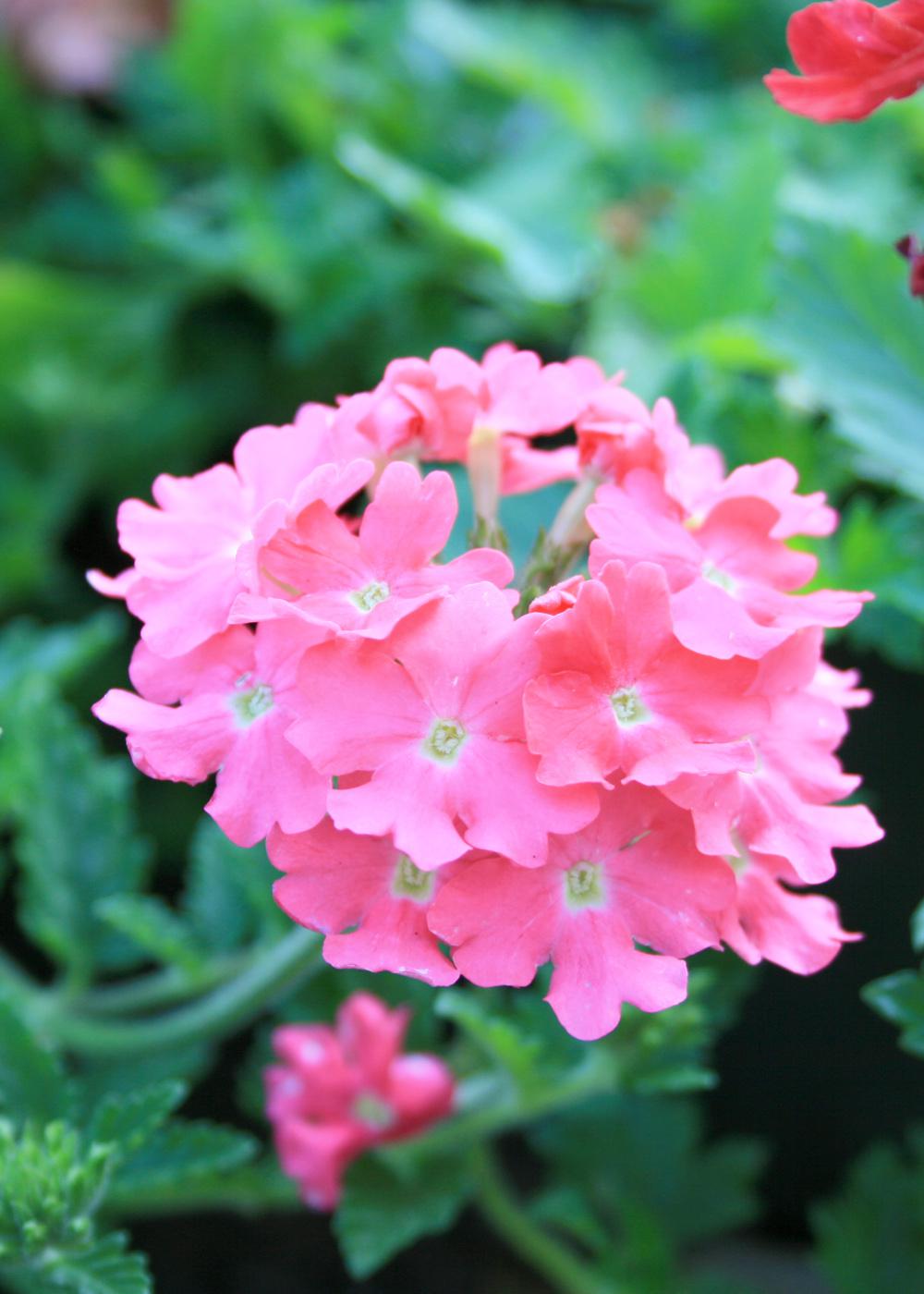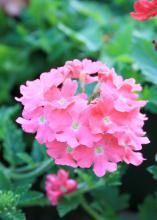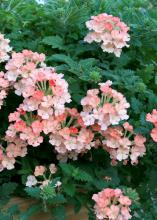Information Possibly Outdated
The information presented on this page was originally released on April 2, 2012. It may not be outdated, but please search our site for more current information. If you plan to quote or reference this information in a publication, please check with the Extension specialist or author before proceeding.
Verbenas provide three seasons of garden color
I think every gardener should take advantage of verbena, a plant that provides three seasons of color.
Verbena is a great flowering plant and belongs to a group of versatile plants that have been proven garden staples for years.
One of verbena’s best attributes is its flowering potential. These plants provide abundant color starting in the early spring and continuing right through the fall. If you protect them from frosts, you can extend their flowering well into late fall. Verbena also attracts butterflies all flowering season.
Verbena has four-sided stems reminiscent of the mint family and releases a spicy aroma if you brush against it. Flowers are displayed in terminal clusters held above the bright green foliage. Each leaf has a gently toothed edge for added texture.
As a testament to verbena’s landscape performance, two selections have been named Mississippi Medallion plants. Biloxi Blue verbena was selected in 1999 for its bright, purplish blue flowers displayed on round panicles. Port Gibson Pink, selected in 2004, provides a profusion of pink and white flowers.
Verbena’s colors range from red to purple and white. Newer varieties include pink and peach tones. I especially like the flowers that have creamy eyes.
Perhaps my favorite is the Lanai series of verbena. These plants have a vigorous trailing growth habit and resistance to powdery mildew, which can be a nuisance in Mississippi’s hot, moist summer landscapes.
Verbenas can be considered tender perennials in the coastal counties, especially through winters like we had this year. The growth habit of Lanai verbena makes it an excellent choice for hanging baskets, ground covers and containers.
Newer verbena selections have strong, lateral growth characteristics, making them good choices for hanging baskets or ground covers in the landscape.
When planting in the landscape, be sure to add a couple handfuls of a good, slow-release fertilizer along with compost into the planting beds. Keeping the soil well drained will also help your verbena grow.
I believe one of the best ways to enjoy verbena is to grow these plants in containers or hanging baskets. Their sprawling growth habit will have the verbena creeping out and over the container edge and provide character to your landscape or patio. Use water-soluble fertilizer to keep the nutrition at optimum levels.
Wherever you plant verbena, make sure the location receives enough sun. Planted in the shade, verbenas get leggy and don’t produce many flowers. Full sun is always the best location. Keep the plants watered but not waterlogged.
If your plants begin to look a little tired, use a sharp pair of pruners to cut them back by one third. This will rejuvenate the plant, and you’ll be rewarded with renewed growth and flowering.
Although your verbenas may re-seed, they will not become a weedy problem. You can move the baby plants around, give them to neighbors, or simply take a hoe to the excess.
Try planting a few verbenas in your garden this spring and enjoying their flowering display all summer.









